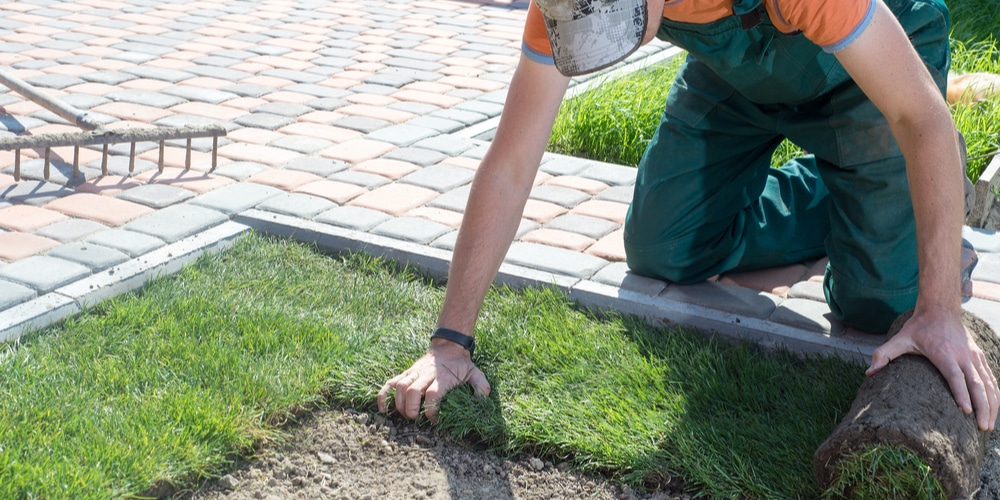Once you have laid your sod, it’s important to care for it well and avoid walking on it until it’s well established. If the sod does not take root, it won’t survive long-term in your lawn. There are many ways to tell if your sod has started to grow well. This article will discuss how to tell if sod has taken root. We’ll also look at why your sod may be struggling.
How to tell if sod has taken root
Laying sod is an effective way to create a lush green lawn quickly. In general, the sod should take root within two to three weeks, depending on the variety of sod you plant and the season. To determine if your sod has taken root, look for the following indicators:
Root Development
The most apparent indicator of successful sod root establishment is when the roots begin to grow down through the soil beneath your lawn. This indicates that your sod has taken hold and will survive long-term in your lawn.
Obviously, it’s hard to tell whether the roots have grown, but you can do a test to determine how well your grasses roots are growing. Gently lift a corner of the sod, and if you feel resistance when lifting, then that is a good indication that the roots are growing and taking hold.
Color of Sod
The sod will become greener and have a more lush appearance if it takes root successfully. You may also notice the color change from a golden brown to a brighter green as the roots are saturated with water during the root establishment process.
Stability of Sod
If you gently press down on the sod, it should feel firm and secure. If it feels spongy or like it is shifting beneath your feet, this could indicate that the sod has not taken root.
Reasons sod may not have taken root
If your sod looks like it’s wilting or is becoming discolored, it may not be taking root. There are several reasons why sod doesn’t take root, including incorrect watering or poor quality sod.
Watering
Newly planted sod requires regular watering to help it take root. If you notice that your sod is wilting or turning brown, then more water may be needed to ensure successful root establishment. In hotter climates, new sod will need plenty of water to become established.
However, you’ll need to be careful not to overwater your lawn. Too much water can damage your sod and drown the roots, so it’s crucial to monitor the amount of water you are giving the sod.
Fertilizer
Another reason that sod is struggling to root is the lack of fertilizer. New sod needs the correct nutrients to thrive; it’s best to give your sod a starter fertilizer after planting. You can choose a fertilizer that’s formulated especially for new grass.
Incorrect preparation
Before laying new sod, ensure that the ground is correctly prepared. If you’ve laid sod over existing grass or compacted soil, the sod will struggle to put down roots.
You should also lay sod at the correct time of year. Cool-season grass should be laid in the fall. Depending on where you live, this will be between the first of September and 15th October. Warm-season sod can be laid in the spring so that it can establish itself before the weather gets hot.
Conclusion
By closely monitoring your sod and recognizing these indicators, you can easily determine if your sod is taking root and has a chance at surviving in your lawn for years to come. If you are uncertain of the progress, contact a professional lawn care expert who can provide advice and support on properly caring for your sod.

